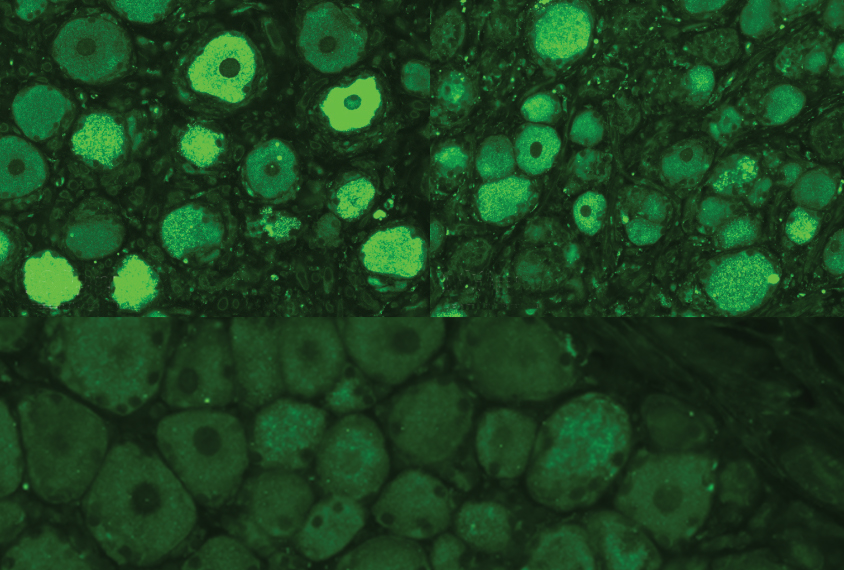A novel method for delivering gene therapies to the brain and spinal cord reduces nerve damage in primates, a new study shows. The approach could improve the safety of gene therapies under development for conditions related to autism, such as Angelman syndrome, Rett syndrome and fragile X syndrome.
Gene therapy typically involves replacing or repairing a faulty gene with a functional version, using a harmless adeno-associated virus (AAV). In primates, however, AAV-based gene therapies can damage the axons — neuronal projections that transmit signals to other cells — of neurons in the dorsal root ganglion, a bundle of nerves close to the spinal cord that relay information to the brain. In severe cases, degeneration in these cells leads to poor motor coordination.
Cell death in the dorsal root ganglion is associated with high levels of expression of the artificially introduced gene, the new work shows. To prevent it, the researchers devised a way to limit this gene expression only in the dorsal root ganglion nerves and not where it is needed.
The method takes advantage of short regulatory RNAs, known as microRNAs, that dampen gene expression by binding to messenger RNA, the intermediary between genes and proteins. The team identified four microRNAs — miRNA96, miRNA145, miRNA182 and miRNA183 — that are mainly expressed in the dorsal root ganglion. For each microRNA, they added its binding sequence to an AAV carrying the gene for a green fluorescent protein and injected it into mice. After 21 days, they imaged tissue slices from the spinal cord and various organs, including the brain, to gauge levels of the protein.
Viruses carrying the binding sequence of miRNA183 most effectively prevented expression of the green protein in the dorsal root ganglion, imaged tissue slices revealed. The findings were published in November in Science Translational Medicine.
Monkey business:
Next, the team tested the viruses in macaques. In one experiment, they injected two animals with a virus carrying only the gene for the fluorescent protein, and another four with a version carrying miRNA183’s binding sequence.
The researchers also made a virus carrying hIDUA, a gene that codes for an enzyme lacking in people with the condition mucopolysaccharidosis. They injected this virus into six macaques, half of which also received steroids to lower immune responses, a common practice in gene therapy trials. Three additional macaques received a modified version of the hIDUA virus that included the miRNA183 binding sequence.
After 14, 60 or 90 days, the team examined tissue slices from the animals’ spinal cord, brain and other organs. Adding miRNA183’s binding sequence to the virus significantly prevented expression of either the fluorescent protein or hIDUA in the dorsal root ganglion, the researchers report. Elsewhere in the body, however, the genes’ expression levels were unaltered, or even increased.
The modified viruses that included miRNA183’s binding sequence also caused less toxicity: Macaques injected with these versions had few, if any, damaging lesions in the dorsal root ganglion. By contrast, the steroid treatment did not reduce toxicity, suggesting that the immune response does not explain the damage.
The microRNA technique could be used to mitigate toxicity for a variety of gene therapies that target the central nervous system, the researchers say. It may also enable scientists to further investigate gene therapies for autism.





